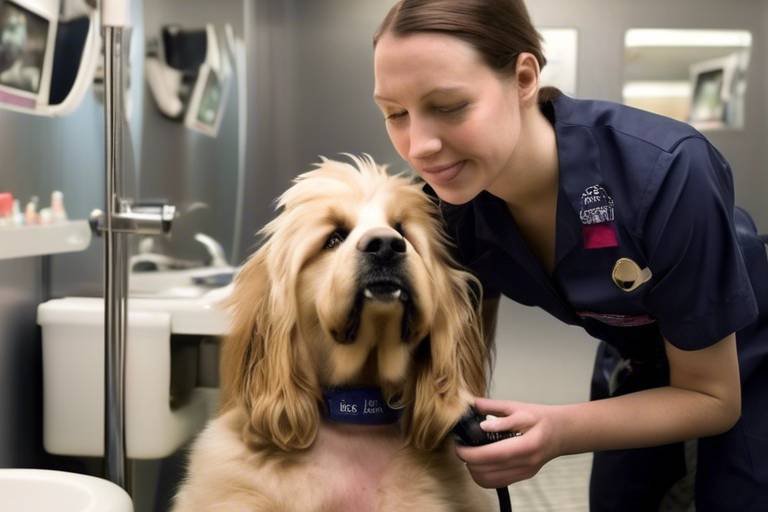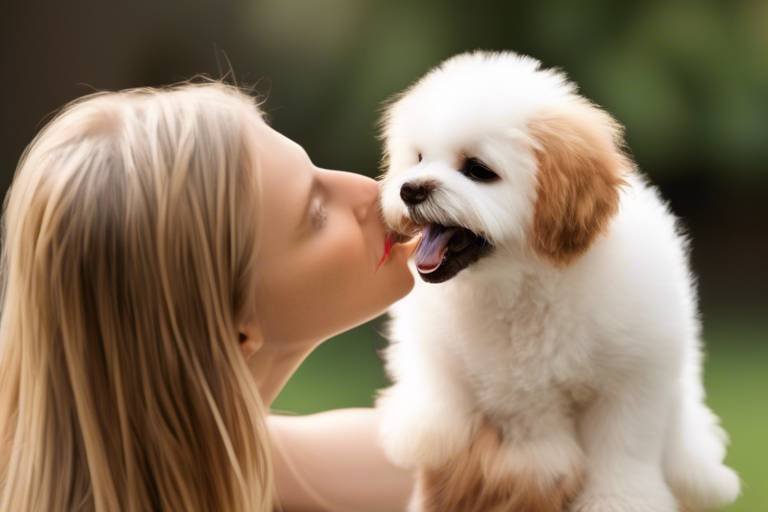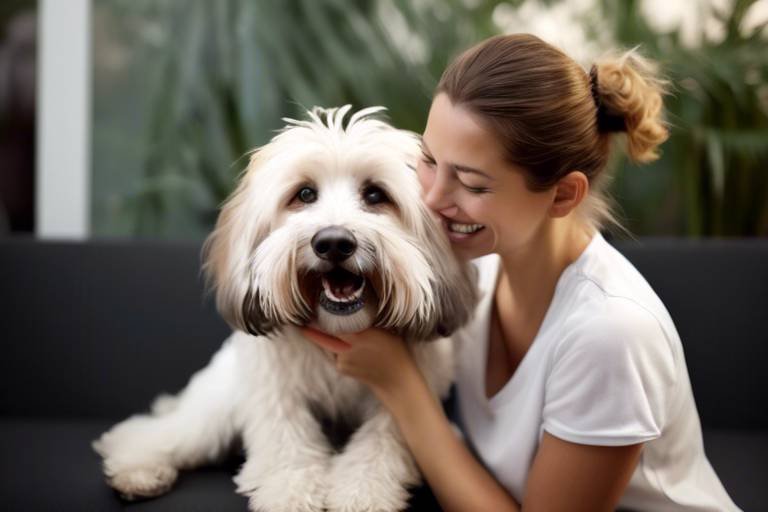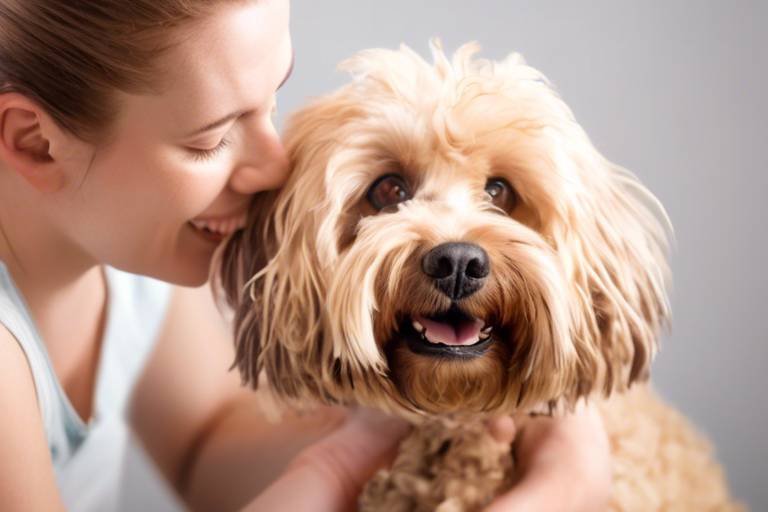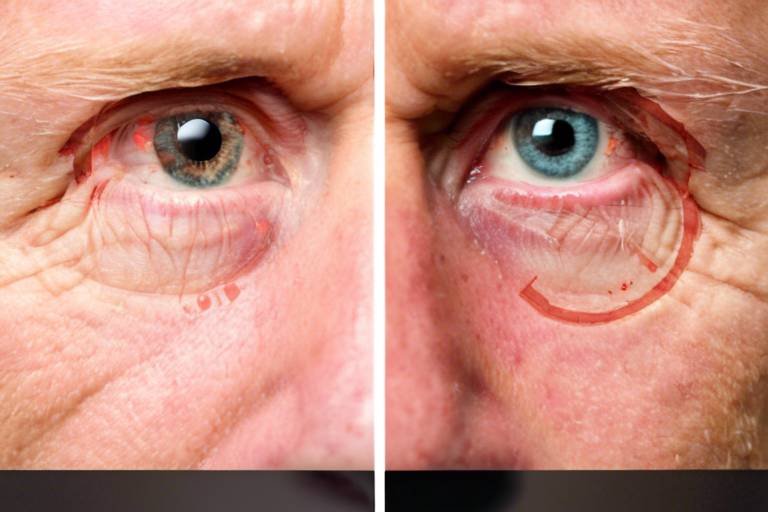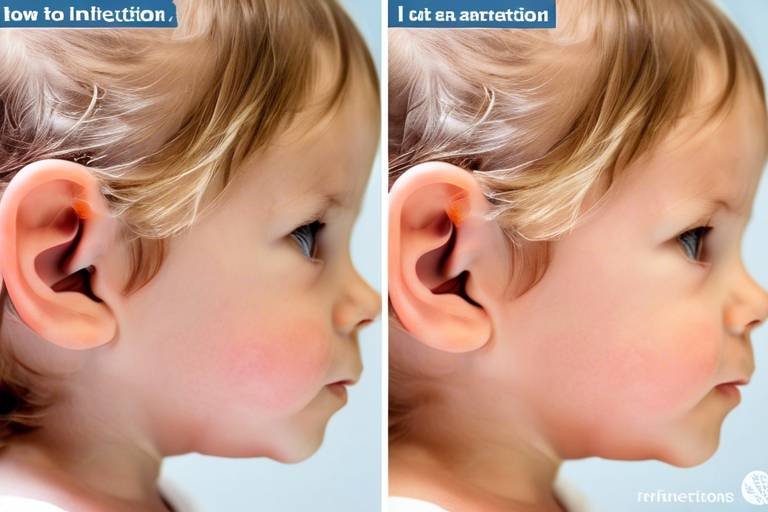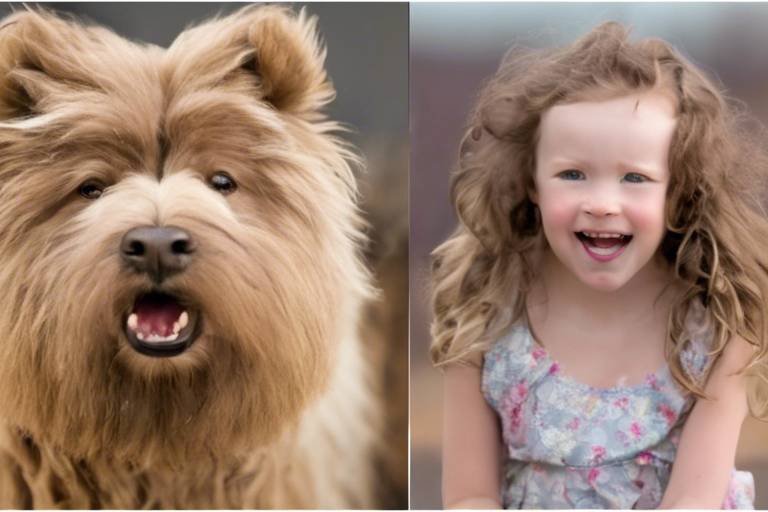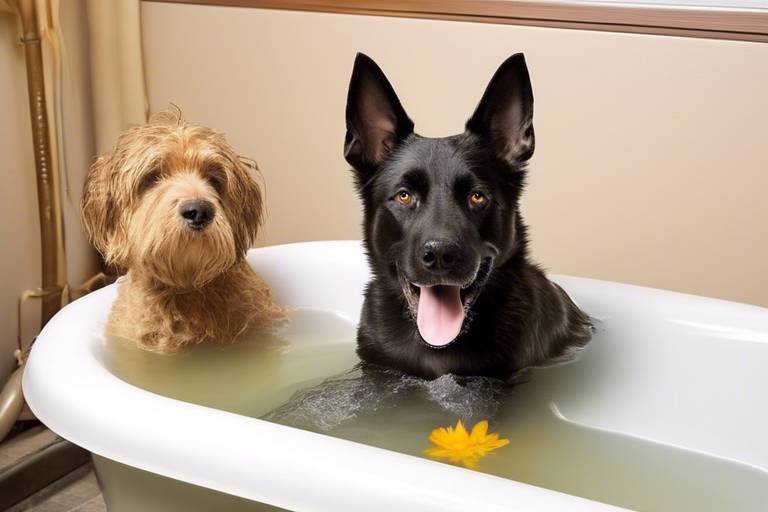How to Use a De-shedding Tool Effectively
When it comes to managing pet fur, using a de-shedding tool can be a game-changer. Imagine having a cleaner home and a healthier coat for your furry friend all at once! But how do you use these tools effectively? In this guide, we will explore the ins and outs of de-shedding tools, ensuring you get the most out of your grooming sessions. Let's dive in!
De-shedding tools are designed to help pet owners manage the inevitable shedding that comes with having furry companions. These tools come in various types, each tailored to remove loose fur while minimizing discomfort for your pet. It’s crucial to understand your pet's coat type before selecting a de-shedding tool. For instance, a tool that works wonders on a Golden Retriever might not be as effective on a short-haired breed like a Beagle. Knowing the right tool for your pet is essential to achieving the best results.
So, how do you select the appropriate de-shedding tool? It largely depends on your pet's breed, coat length, and shedding frequency. Here’s a quick guide to help you make an informed choice:
| Coat Type | Recommended Tool |
|---|---|
| Short Hair | Rubber Brush |
| Medium Hair | Undercoat Rake |
| Long Hair | Wide-toothed Comb |
| Heavy Shedding | Metal De-shedding Tool |
As you can see, the right tool can make all the difference. Selecting a de-shedding tool that caters to your pet's specific needs will not only make grooming easier but also more effective.
There’s a plethora of de-shedding tools available, from combs to brushes and shedding blades. Understanding these options ensures you select the most effective tool for your pet's needs. Combs are great for removing tangles, while brushes can help gather loose fur. Shedding blades, on the other hand, are perfect for heavy shedders. Each tool has its unique purpose, so it’s essential to choose wisely.
When it comes to de-shedding tools, you’ll find that metal tools are designed for heavy shedding, making them ideal for breeds that shed a lot. They can efficiently remove undercoat fur, giving your pet a fresh look. However, if your pet has sensitive skin, rubber tools may be a gentler option. They are softer on the skin and can still effectively remove loose hair without causing discomfort.
Some breeds require specialized tools for optimal de-shedding results. For example, a Husky will benefit from a high-quality undercoat rake, while a Shih Tzu may need a slicker brush to keep their coat healthy. It’s worth doing a bit of research on the best tools for your specific breed to ensure you’re equipped for success.
Now that you have your de-shedding tool, let’s talk about how to use it effectively. Proper technique is crucial for effective de-shedding. Here’s a simple step-by-step guide:
- Start with a clean coat: Brush your pet’s coat to remove any tangles before using the de-shedding tool.
- Choose the right time: Pick a time when your pet is relaxed, perhaps after a walk or playtime.
- Use gentle strokes: Glide the de-shedding tool over your pet’s coat in the direction of hair growth.
- Take breaks: If your pet seems uncomfortable, take a break and give them some love.
Following these steps can make the grooming process smoother and more enjoyable for both you and your pet.
Creating a consistent grooming routine is essential for managing shedding and keeping your pet’s coat healthy. Regular grooming not only helps reduce loose fur around your home but also allows you to check for any skin issues or parasites. Aim for a grooming session at least once a week, but adjust the frequency based on your pet’s shedding patterns.
The frequency of grooming sessions varies based on your pet's coat type and shedding patterns. For some pets, weekly grooming is sufficient, while others may require daily sessions during shedding seasons. Keep an eye on your pet’s coat and adjust your schedule accordingly. A little proactive grooming can go a long way in maintaining a healthy coat.
Recognizing when your pet needs grooming is essential for maintaining a healthy coat. Common signs that indicate it’s time for a de-shedding session include:
- Excessive shedding around the house
- Tangled or matted fur
- Visible undercoat coming through
- Unpleasant odors from the coat
If you notice any of these signs, it may be time to grab that de-shedding tool and get to work!
Q: How often should I use a de-shedding tool on my pet?
A: It depends on your pet's coat type and shedding frequency. Generally, weekly sessions are recommended, but adjust based on your pet's needs.
Q: Can I use a de-shedding tool on a wet coat?
A: It's best to use a de-shedding tool on a dry coat to avoid tugging and discomfort.
Q: What should I do if my pet doesn't like being groomed?
A: Start slow and make grooming a positive experience with treats and praise. If necessary, consult a professional groomer for advice.
By following these tips and establishing a regular grooming routine, you can effectively manage your pet’s shedding and keep their coat looking fabulous!
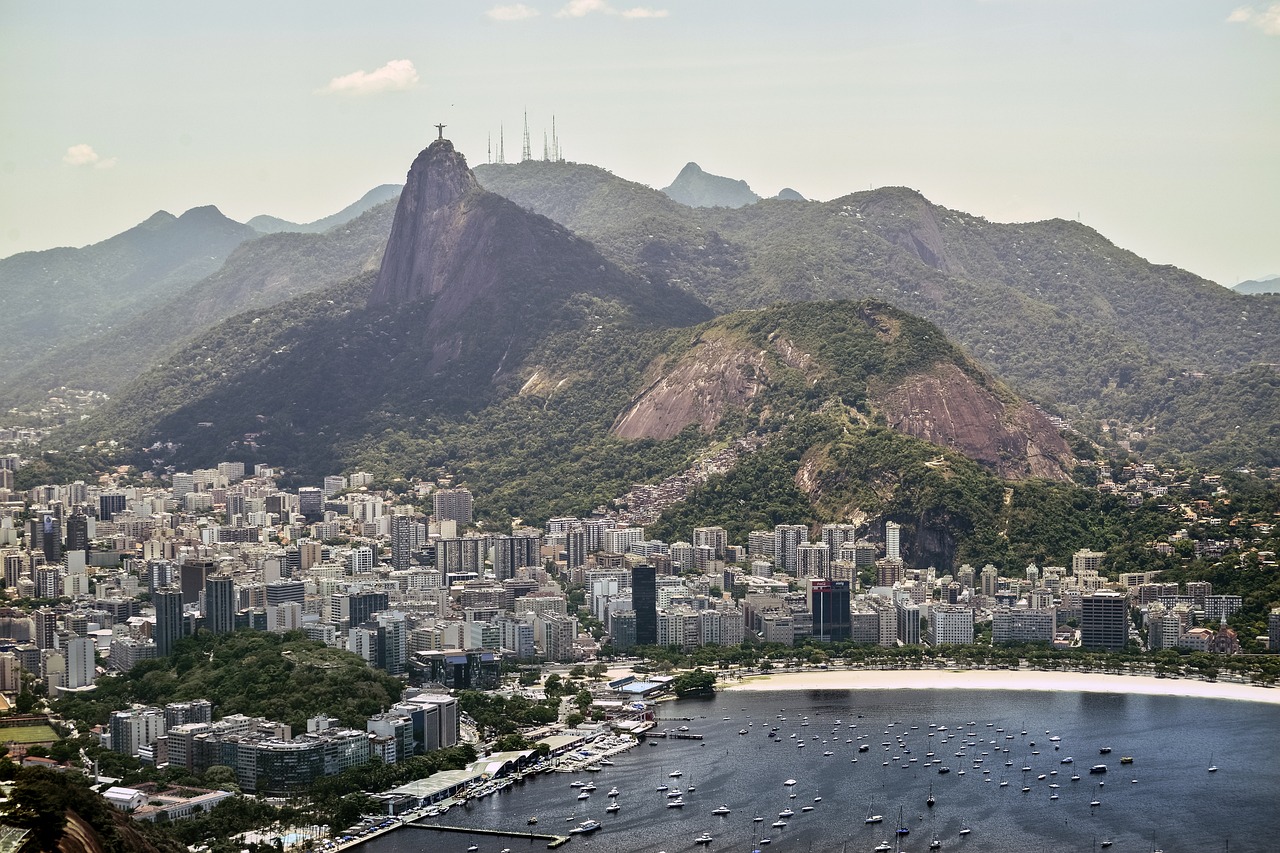
Understanding De-shedding Tools
This article provides a comprehensive guide on using a de-shedding tool to manage pet fur effectively, ensuring a cleaner home and a healthier coat for your furry friend.
De-shedding tools are essential for any pet owner who wants to keep their home free from an avalanche of fur while also ensuring their furry companions have a healthy, shiny coat. These tools are designed to remove loose hair from your pet's coat, significantly reducing shedding while being gentle on their skin. Imagine trying to catch the wind in a net; that's how shedding can feel without the right tools in hand! Understanding the various types of de-shedding tools available is crucial for making the right choice for your pet.
There are several types of de-shedding tools, each tailored to different coat types and shedding patterns. For instance, some tools are designed specifically for long-haired breeds, while others work best for short-haired pets. This variety allows pet owners to choose a tool that not only meets their pet's grooming needs but also enhances their overall grooming experience. It's like having a toolbox filled with just the right instruments for every job!
When selecting a de-shedding tool, consider the following factors:
- Coat Type: Different breeds have different coat textures and lengths, which can affect the type of tool that will work best.
- Shedding Frequency: Some pets shed year-round, while others may have seasonal shedding. Understanding your pet's shedding pattern will help you choose the right tool.
- Skin Sensitivity: If your pet has sensitive skin, you may want to opt for gentler tools, such as rubber de-shedding brushes.
Additionally, it’s important to familiarize yourself with the two main categories of de-shedding tools: metal and rubber. Metal tools are typically more effective for heavy shedders, as they can penetrate through thick fur and remove more loose hair. However, they might not be suitable for pets with sensitive skin, as they can cause discomfort. On the other hand, rubber tools provide a softer approach, making them ideal for pets with delicate skin. They can also help stimulate blood circulation while massaging your pet, turning grooming into a bonding experience.
In summary, understanding the various de-shedding tools and their specific uses is key to effective grooming. The right tool not only makes the process easier but also ensures that your pet remains comfortable and happy throughout. So, take the time to explore your options and find the perfect de-shedding tool that suits your furry friend!
Selecting the appropriate de-shedding tool depends on your pet's breed, coat length, and shedding frequency. This section explores different options to help you make an informed choice.
From combs to brushes and shedding blades, various tools cater to different fur types. Understanding these options ensures you select the most effective tool for your pet's needs.
Metal de-shedding tools are designed for heavy shedding, while rubber tools are gentler and ideal for sensitive skin. Knowing the difference can enhance your grooming experience.
Certain breeds require specific tools for optimal de-shedding results. This section discusses which tools work best for popular dog and cat breeds.
Proper technique is crucial for effective de-shedding. This section outlines step-by-step instructions on how to use these tools safely and efficiently on your pet.
Creating a consistent grooming routine helps manage shedding and keeps your pet's coat healthy. This section provides tips on how often to groom and the best practices to follow.
The frequency of grooming sessions varies based on your pet's coat type and shedding patterns. This subsection discusses how to determine the ideal schedule for your pet.
Recognizing when your pet needs grooming is essential for maintaining a healthy coat. This section highlights common signs that indicate it's time for a de-shedding session.
Q: How often should I use a de-shedding tool on my pet?
A: The frequency depends on your pet's coat type and shedding patterns. Generally, long-haired breeds may require weekly grooming, while short-haired breeds might need it every few weeks.
Q: Can I use a de-shedding tool on my cat?
A: Absolutely! Many de-shedding tools are suitable for both dogs and cats. Just ensure you choose one that is appropriate for your cat's coat type.
Q: What should I do if my pet seems uncomfortable during grooming?
A: If your pet shows signs of discomfort, stop immediately. Consider using a gentler tool or consult with a professional groomer for advice.

Choosing the Right Tool
When it comes to grooming your pet, choosing the right de-shedding tool is crucial. Just like picking the right outfit for a special occasion, the tool you select can make a world of difference in your pet's grooming experience. The right tool not only ensures that you effectively manage shedding but also keeps your furry friend comfortable throughout the process. So, how do you determine which tool is best suited for your pet? Let's dive into some key factors that will help you make an informed choice.
First, consider your pet's breed. Different breeds have unique coat types, and understanding these distinctions is essential. For example, long-haired breeds like the Golden Retriever or Persian Cat may require a different approach than short-haired breeds such as the Beagle or American Shorthair. Each type of coat has its own shedding patterns and grooming needs. If you own a double-coated breed, like a Husky, you’ll need a more robust tool to handle the heavy shedding that occurs during seasonal changes.
Next, think about your pet's coat length. Generally, there are three categories: short, medium, and long. Short-haired pets may benefit from a simple rubber grooming mitt or a basic bristle brush, while medium to long-haired pets often require more specialized tools. For instance, a slicker brush or a de-shedding tool with fine teeth can work wonders on long-haired breeds, helping to remove loose fur without causing discomfort.
Another factor to consider is the shedding frequency. Some pets shed year-round, while others have specific shedding seasons. If your pet is a frequent shedder, investing in a high-quality de-shedding tool like a Furminator might be worthwhile. On the other hand, if your pet sheds less frequently, a simpler brush may suffice. Understanding your pet's shedding habits can save you time and ensure you choose a tool that meets their specific needs.
To further assist you in selecting the right tool, here's a quick comparison table that highlights common tools based on coat type:
| Coat Type | Recommended Tool | Purpose |
|---|---|---|
| Short Hair | Rubber Grooming Mitt | Removes loose fur and dirt gently |
| Medium Hair | Slicker Brush | Untangles knots and removes undercoat |
| Long Hair | De-shedding Tool | Effectively reduces shedding and prevents matting |
Lastly, don’t forget to consider your pet’s comfort. The grooming tool should feel good in your hand and not cause discomfort to your pet. Always look for tools with ergonomic handles and soft bristles or edges to ensure a pleasant grooming experience. After all, grooming should be a bonding time between you and your furry companion, not a stressful ordeal!
In summary, choosing the right de-shedding tool is all about understanding your pet's unique needs. By considering their breed, coat length, shedding frequency, and comfort, you can ensure that grooming becomes an enjoyable routine for both of you. Now, let’s move on to the next step in our grooming journey: learning how to use these tools effectively!
Types of De-shedding Tools
When it comes to managing your pet's shedding, understanding the available is crucial. Each tool serves a unique purpose, tailored to different coat types and shedding needs. Let’s dive into the world of de-shedding tools and explore what makes each one special. From combs to brushes, and shedding blades, these tools can be your best friends in the battle against fur buildup in your home.
First up, we have de-shedding brushes. These are typically designed with fine, closely spaced teeth that effectively grab loose fur without pulling on your pet's skin. They are especially effective for pets with medium to long hair, as they can reach deeper into the coat. If your furry friend has a thicker coat, a de-shedding brush can help you remove that undercoat, which is often the main culprit behind excessive shedding.
Next, let’s talk about de-shedding combs. These tools are great for precision grooming, allowing you to tackle specific areas where shedding is most noticeable. Combs are particularly useful for pets with fine or silky coats, as they help to detangle while removing loose fur. They can also be used in conjunction with brushes for a more thorough grooming session.
Another popular option is the shedding blade. This tool consists of a metal blade with teeth on one side, designed to glide over your pet's coat and remove loose hair. Shedding blades are particularly effective for short-haired breeds, as they can quickly and efficiently gather loose fur without damaging the coat. However, be cautious with this tool, as it can be a bit harsh on sensitive skin.
For those who prefer a gentler approach, rubber grooming tools are a fantastic alternative. These tools often come in the form of brushes or mitts and are designed to massage your pet while collecting loose fur. They are especially great for pets with sensitive skin, as they provide a soothing experience while effectively reducing shedding. Plus, your pet will likely enjoy the massage factor!
To help you visualize the differences between these tools, here’s a quick comparison table:
| Tool Type | Best For | Coat Types | Skin Sensitivity |
|---|---|---|---|
| De-shedding Brush | Removing loose fur | Medium to Long Hair | Moderate |
| De-shedding Comb | Precision grooming | Fine or Silky Coats | Low |
| Shedding Blade | Quick loose hair removal | Short Hair | Low |
| Rubber Grooming Tool | Gentle grooming | All Coat Types | High |
In conclusion, selecting the right de-shedding tool can make all the difference in your grooming routine. By understanding the various types available, you can choose the one that best suits your pet's needs, ensuring a happier, healthier coat. Remember, grooming isn’t just about keeping your home fur-free; it’s also a fantastic bonding experience for you and your furry friend!
- How often should I use a de-shedding tool? - It depends on your pet's coat type and shedding frequency. Generally, once a week is a good starting point.
- Can I use a de-shedding tool on wet fur? - It's best to use these tools on dry fur to avoid pulling and discomfort.
- What if my pet doesn't like being groomed? - Start slowly and make it a positive experience with treats and praise. Gradually increase the duration as they become more comfortable.
Metal vs. Rubber Tools
When it comes to choosing the right de-shedding tool for your furry friend, understanding the differences between metal and rubber tools is essential. Each type of tool has its unique advantages and is suited for different grooming needs, so let’s dive into the details!
Metal de-shedding tools are typically designed for heavy shedding. They feature fine, sturdy blades that can effectively reach through your pet's dense coat, removing loose hair and undercoat with ease. This makes them particularly useful for breeds that shed a lot, such as Golden Retrievers or German Shepherds. However, while metal tools are highly effective, they can sometimes be too harsh for pets with sensitive skin or those who are not used to grooming. It's crucial to use them gently to avoid causing any discomfort.
On the other hand, rubber de-shedding tools offer a gentler alternative. These tools are often made with soft rubber bristles that not only help to remove loose fur but also provide a soothing massage for your pet. This makes them ideal for pets with sensitive skin or those who might be skittish during grooming sessions. Rubber tools can also be great for short-haired breeds like Beagles or Boxers, as they effectively capture loose hair without pulling on the coat.
To help you decide which tool might be best for your pet, consider the following table that summarizes the key differences:
| Feature | Metal Tools | Rubber Tools |
|---|---|---|
| Best for | Heavy shedding breeds | Sensitive skin and short-haired breeds |
| Effectiveness | Highly effective for removing undercoat | Good for surface shedding and massage |
| Comfort | Can be harsh if not used carefully | Gentle and soothing |
| Durability | Long-lasting | Durable but may wear out faster |
Ultimately, the choice between metal and rubber tools depends on your pet's specific needs and comfort level. If your pet is a heavy shedder and can tolerate a firmer approach, a metal tool might be your best bet. However, if your furry friend has sensitive skin or gets anxious during grooming, you might want to opt for a rubber tool that offers a more comforting experience. Always remember to introduce any grooming tool gradually to your pet, allowing them to become familiar with it to ensure a positive grooming experience.
Specialized Tools for Different Breeds
When it comes to grooming our furry companions, one size definitely does not fit all. Different breeds come with unique fur types and shedding patterns, which means that using the right de-shedding tool is crucial for achieving the best results. For instance, a Golden Retriever with its thick, double coat will require a tool that can handle heavy shedding, while a short-haired Chihuahua might only need a gentle rubber brush to keep its coat in top shape.
Let’s break it down a bit further. Here are some specialized tools that cater to specific breeds:
| Breed | Recommended Tool | Reason |
|---|---|---|
| Golden Retriever | Furminator or Slicker Brush | Handles thick undercoat and reduces shedding effectively. |
| Poodle | Stainless Steel Comb | Helps detangle and maintain the curly coat. |
| Shih Tzu | Pin Brush | Gentle on the skin and effective for long hair. |
| Beagle | Rubber Brush | Great for short coats and helps remove loose hair. |
| Persian Cat | Wide-tooth Comb | Prevents matting and keeps the coat smooth. |
Understanding the specific needs of your pet’s breed can transform grooming from a chore into a bonding experience. For example, using a Furminator on a Golden Retriever not only removes loose fur but also massages the skin, promoting a healthy coat and a happy pet. On the other hand, using a pin brush on a Shih Tzu’s long hair can prevent painful tangles and keep their coat looking fabulous.
Moreover, it’s essential to consider the sensitivity of your pet's skin. Some breeds, like the French Bulldog, have sensitive skin that can easily be irritated. For such pets, opting for softer tools, like rubber brushes, can make all the difference. In contrast, breeds with thicker fur, such as Huskies, thrive with metal tools designed to penetrate their dense coats.
By selecting the right tool tailored to your pet's breed, you not only enhance the effectiveness of the de-shedding process but also ensure that your furry friend enjoys the grooming sessions. After all, a well-groomed pet is a happy pet!
- How often should I use a de-shedding tool on my pet? It depends on your pet's breed and coat type. Generally, once a week is a good starting point.
- Can I use a de-shedding tool on a puppy? Yes, but make sure to choose a gentle tool suitable for young pets.
- What should I do if my pet seems uncomfortable during grooming? Stop immediately and check the tool. Ensure it's suitable for their coat type and skin sensitivity.
How to Use De-shedding Tools
Using a de-shedding tool effectively is not just about removing that pesky fur from your pet's coat; it's also about ensuring that the experience is pleasant for both you and your furry friend. Imagine this: you’re sitting on the floor, your dog or cat is lounging beside you, and you’re both enjoying a bonding moment while keeping your home fur-free. Sounds great, right? But to achieve this, you need to master the technique of using these tools.
First, it's essential to prepare your pet for grooming. Start by creating a calm environment. You might want to do this after a walk or playtime when your pet is more relaxed. Gently brush your pet with a regular brush to get them used to the sensation. This step is crucial because it helps your pet associate grooming with positive experiences.
Next, when you pick up your de-shedding tool, hold it firmly but gently. A common mistake is to apply too much pressure, thinking it will remove more fur. However, this can lead to discomfort for your pet. Instead, use a light touch and let the tool do the work. Always brush in the direction of hair growth. This not only prevents pulling on your pet’s skin but also makes the process more effective. Think of it like petting your furry friend; you wouldn’t want to rub them the wrong way!
As you start de-shedding, work in small sections. For example, if you’re grooming a dog, begin at the neck and move towards the tail, making sure to cover all areas. This method ensures that you don’t miss spots and helps keep your pet calm. If you notice any tangles or mats, take your time to work through them gently. You can use your fingers or a comb to help loosen them before continuing with the de-shedding tool.
Don't forget to check the tool regularly. After a few strokes, pause to remove the collected fur from the tool. This step is vital because a clogged tool won’t work effectively. Depending on the type of de-shedding tool you’re using, this might involve simply pulling the fur off or using a button or lever to release it. Keeping the tool clean will make the process smoother and more efficient.
Finally, always end the grooming session on a positive note. Reward your pet with treats, affection, or playtime. This positive reinforcement will help your pet look forward to future grooming sessions. Remember, grooming is not just a chore; it’s an opportunity to bond with your pet and keep them healthy!
Q: How often should I use a de-shedding tool?
A: The frequency depends on your pet's breed and coat type. Generally, once a week is a good starting point, but long-haired breeds may require more frequent sessions.
Q: Can I use a de-shedding tool on wet fur?
A: It’s best to use these tools on dry fur. Wet fur can create mats and make it harder to remove loose hair effectively.
Q: What if my pet doesn’t like being groomed?
A: Start slowly and make it a positive experience. Use treats and praise to encourage your pet, and consider consulting a professional groomer for tips.
Q: Are there any risks associated with using de-shedding tools?
A: If used incorrectly, de-shedding tools can cause skin irritation or discomfort. Always use the right tool for your pet’s coat type and follow the proper techniques.

Establishing a Grooming Routine
Creating a consistent grooming routine is not just about keeping your home free from pet fur; it's also about ensuring your furry friend maintains a healthy coat and enjoys the grooming process. Think of grooming as a bonding activity, much like a relaxing spa day for your pet. It’s a chance for you to check for any skin issues, parasites, or abnormalities while also providing your pet with the attention they crave. So, how do you establish a routine that works for both you and your pet?
First, consider your pet's specific needs. Different breeds and coat types require varying levels of grooming. For instance, a long-haired Golden Retriever will need more frequent grooming than a short-haired Beagle. A good rule of thumb is to groom your pet at least once a week, but this can increase during shedding seasons or if your pet has a particularly thick coat. Establishing a schedule not only helps manage shedding but also makes your pet accustomed to the grooming process, turning it into a regular part of their life.
To make your grooming sessions as effective as possible, it’s essential to choose a time when your pet is calm and relaxed. Many pet owners find that after a walk or playtime is ideal, as their pet is more likely to be tired and willing to sit still for grooming. You can also create a cozy environment by using their favorite blanket or a comfortable grooming table. This will help your pet associate grooming with positive experiences, reducing any anxiety they may have.
In addition to frequency, pay attention to the signs that indicate your pet needs grooming. If you notice excessive shedding, a matted coat, or your pet scratching more than usual, it’s time to break out the de-shedding tool. Regular grooming not only helps to manage loose fur but also promotes better skin health by distributing natural oils throughout your pet’s coat.
To make the grooming process smoother, consider the following tips:
- Be gentle: Always use a light hand, especially around sensitive areas like the belly and legs.
- Use treats: Reward your pet during and after grooming to create a positive association.
- Stay consistent: Try to groom your pet at the same time each week to build a routine.
Ultimately, establishing a grooming routine is about finding what works best for you and your pet. It may take some time to figure out the right frequency and techniques, but the benefits are well worth the effort. A well-groomed pet is not only more comfortable but also healthier and happier, which is what every pet owner desires.
Here are some common questions pet owners have about grooming routines:
- How often should I groom my pet? This depends on your pet's breed and coat type. Generally, once a week is a good starting point.
- What tools do I need for grooming? Basic tools include a de-shedding tool, a brush, and possibly nail clippers. The specific tools may vary based on your pet's coat type.
- What if my pet doesn’t like grooming? Start slow, use treats, and ensure the environment is calm. It may take time, but patience is key.
Frequency of Grooming Sessions
When it comes to keeping your furry friend looking fabulous and minimizing the mess in your home, grooming frequency plays a crucial role. Just like we have our own routines for self-care, pets thrive on consistency too. The ideal frequency of grooming sessions can vary significantly based on your pet's coat type, breed, and shedding patterns. For instance, short-haired breeds might only need a quick brush once a week, while long-haired companions could require daily attention to prevent tangles and mats.
So, how do you determine the best grooming schedule for your pet? Start by observing their shedding habits. If you notice fur accumulating on your furniture or clothes, it might be time to step up your grooming game. For dogs and cats with heavier coats, a bi-weekly or weekly grooming session can work wonders. On the other hand, if your pet has a lighter coat, a grooming session every two to four weeks might suffice. It's all about finding that sweet spot that keeps your pet comfortable and your home fur-free!
Here's a quick breakdown of grooming frequencies based on coat types:
| Coat Type | Recommended Grooming Frequency |
|---|---|
| Short Hair | Every 1-2 weeks |
| Medium Hair | Weekly |
| Long Hair | 2-3 times a week |
| Curly Hair | Weekly |
In addition to shedding, pay attention to your pet's skin condition and overall health. If you notice any changes, such as increased itching or redness, it might be time to adjust your grooming routine. Regular grooming not only helps in managing shedding but also promotes a healthier coat by distributing natural oils and preventing skin issues. Think of it as a spa day for your pet, where they get pampered and you get a cleaner home!
Remember, grooming isn't just about removing loose fur; it's also a wonderful opportunity to bond with your pet. Make it a fun experience by incorporating treats and praise. After all, who doesn't love a little extra love during grooming time? So grab that de-shedding tool and get ready to make your pet feel like a superstar!
- How often should I groom my pet? It depends on their coat type. Short-haired pets may need grooming every 1-2 weeks, while long-haired pets require more frequent sessions.
- What tools should I use for grooming? Use de-shedding tools appropriate for your pet's coat type. Metal tools are great for heavy shedding, while rubber tools are gentler for sensitive skin.
- Can I groom my pet at home? Absolutely! With the right tools and techniques, you can easily groom your pet at home, saving time and money.
- What signs indicate my pet needs grooming? Look for excessive shedding, mats in their fur, or a dull coat. If they seem uncomfortable or itchy, it’s time for a grooming session!
Signs Your Pet Needs Grooming
Recognizing when your furry friend needs grooming is crucial for maintaining their overall health and happiness. Just like we feel refreshed after a good haircut, our pets benefit immensely from regular grooming sessions. But how can you tell when it’s time to break out the de-shedding tool? Here are some key signs to look out for:
Firstly, if you notice excessive shedding around your home, it might be time to schedule a grooming session. If you find tufts of fur decorating your furniture or clothes, your pet is likely carrying around a lot of loose hair that needs to be removed. Additionally, if you see your pet constantly scratching or biting at their coat, this could indicate that they are uncomfortable and in need of some grooming love. It’s not just about aesthetics; a well-groomed coat is essential for your pet's skin health.
Another sign to watch for is matting or tangles in your pet's fur. Long-haired breeds, in particular, are prone to mats that can trap dirt and moisture, leading to skin irritations. If you run your fingers through their coat and feel knots or if you see clumps of fur that are sticking together, it’s time to get to work. Regular grooming can help prevent these issues from becoming more serious.
Also, pay attention to your pet’s behavior. If they seem unusually agitated when being petted or if they shy away from touch, it might be a sign that their coat needs some attention. Grooming can be a bonding experience, so if your pet is avoiding it, they might be feeling uncomfortable in their own fur.
Lastly, consider the seasonal changes. Many pets experience a change in shedding patterns with the seasons. As warmer weather approaches, they may shed their winter coat, and this is the perfect time to help them out with a de-shedding tool. Regular grooming during these times can minimize the amount of fur that ends up on your floors and furniture.
In summary, keeping an eye on your pet's coat and behavior can help you determine when it’s time for a grooming session. By being proactive, you can ensure your furry friend stays comfortable and healthy. So, next time you notice any of these signs, don’t hesitate to grab that de-shedding tool and give your pet the care they deserve!
Here are some common questions pet owners have regarding grooming:
- How often should I groom my pet? The frequency depends on your pet's coat type and shedding patterns. Generally, long-haired pets may need grooming several times a week, while short-haired breeds might only need it once a month.
- Can grooming help with allergies? Yes! Regular grooming can help reduce allergens in your home by removing loose fur and dander.
- What if my pet doesn't like being groomed? Patience is key. Start slowly and make the experience positive with treats and praise. If necessary, consult a professional groomer.
Frequently Asked Questions
- What is a de-shedding tool?
A de-shedding tool is a grooming device designed to remove loose fur from your pet's coat. It helps reduce shedding and keeps your home cleaner while promoting a healthier coat for your furry friend.
- How do I choose the right de-shedding tool for my pet?
Choosing the right tool depends on your pet's breed, coat length, and shedding frequency. For example, long-haired breeds may require a different tool than short-haired ones. It's essential to match the tool to your pet's specific needs for optimal results.
- Are metal or rubber de-shedding tools better?
Metal de-shedding tools are typically more effective for heavy shedding, while rubber tools are gentler and ideal for pets with sensitive skin. Consider your pet's comfort and coat type when making your choice.
- How often should I groom my pet?
The frequency of grooming sessions varies based on your pet's coat type and shedding patterns. Generally, long-haired pets may need grooming several times a week, while short-haired pets might only require grooming once a month.
- What signs indicate my pet needs grooming?
Common signs that your pet needs grooming include excessive shedding, mats or tangles in the fur, and a generally unkempt appearance. If you notice these signs, it’s time for a de-shedding session!
- Can I use a de-shedding tool on my cat?
Yes! De-shedding tools can be used on cats as well. Just make sure to select a tool designed for feline coats, as their fur and skin sensitivity can differ from dogs.
- How do I use a de-shedding tool correctly?
To use a de-shedding tool effectively, start by brushing your pet in the direction of hair growth. Use gentle pressure and avoid sensitive areas. Take your time and reward your pet with treats to make the experience positive!
- Are there any risks associated with using de-shedding tools?
If used incorrectly, de-shedding tools can cause discomfort or skin irritation. Always follow the manufacturer's instructions and pay attention to your pet's reactions during grooming to ensure a safe experience.


